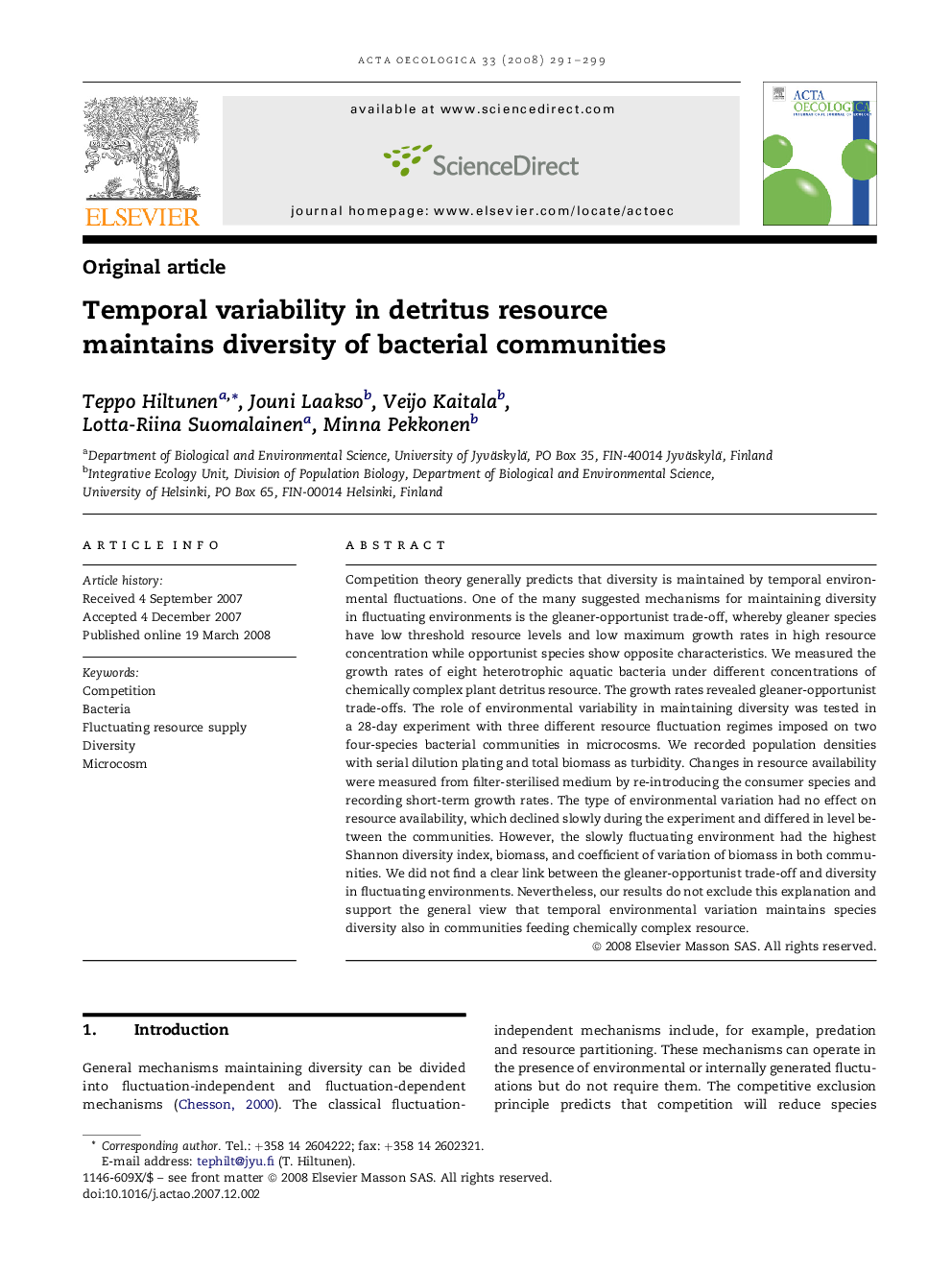| Article ID | Journal | Published Year | Pages | File Type |
|---|---|---|---|---|
| 4381550 | Acta Oecologica | 2008 | 9 Pages |
Abstract
Competition theory generally predicts that diversity is maintained by temporal environmental fluctuations. One of the many suggested mechanisms for maintaining diversity in fluctuating environments is the gleaner-opportunist trade-off, whereby gleaner species have low threshold resource levels and low maximum growth rates in high resource concentration while opportunist species show opposite characteristics. We measured the growth rates of eight heterotrophic aquatic bacteria under different concentrations of chemically complex plant detritus resource. The growth rates revealed gleaner-opportunist trade-offs. The role of environmental variability in maintaining diversity was tested in a 28-day experiment with three different resource fluctuation regimes imposed on two four-species bacterial communities in microcosms. We recorded population densities with serial dilution plating and total biomass as turbidity. Changes in resource availability were measured from filter-sterilised medium by re-introducing the consumer species and recording short-term growth rates. The type of environmental variation had no effect on resource availability, which declined slowly during the experiment and differed in level between the communities. However, the slowly fluctuating environment had the highest Shannon diversity index, biomass, and coefficient of variation of biomass in both communities. We did not find a clear link between the gleaner-opportunist trade-off and diversity in fluctuating environments. Nevertheless, our results do not exclude this explanation and support the general view that temporal environmental variation maintains species diversity also in communities feeding chemically complex resource.
Related Topics
Life Sciences
Agricultural and Biological Sciences
Ecology, Evolution, Behavior and Systematics
Authors
Teppo Hiltunen, Jouni Laakso, Veijo Kaitala, Lotta-Riina Suomalainen, Minna Pekkonen,
